Here’s an interesting thing, I did not plan this. Two weeks ago in studio, I prepped some square panels I had stacked; and since I had some gesso left in the cup, the brush still wet, I grabbed a couple more panels and coated them also with this base coat. Did I have a plan? All I remember was that I was going to make some starter marks on a couple of the panels once the gesso dried.
I then set out a simple color palette, and started in, working intuitively. If I got one solid piece out of the workday, I would have been satisfied. Some days just getting in the studio and working is victory enough. I am deliberately taking the pressure off. The effort is all practice. And the freeing thing is, if the result is poor, it’s just some history I can work on top of next time. Is it true that “the mouth speaks out of that which fills the heart”? In my case, the arm was moving out of that which was in my mind and probably my heart, for I have been studying biblical prophecy.
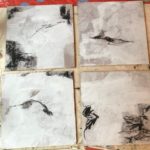
Now, I was not planning on illustrating what I was learning, that usually does not work well for me (it gets wooden that way, or even didactic). And I did not purposely select seven panels, I was being solely utilitarian with the materials I had, and the space on my worktable. My aim was to just get the materials moving. I started working on several of these prepped pieces at once with darks on white value studies and then worked in hues. If it had occurred to me at any point that I was illustrating something specific, I would have tightened up. But surely the data in my head was being drawn upon as I just played. My expectations were free.
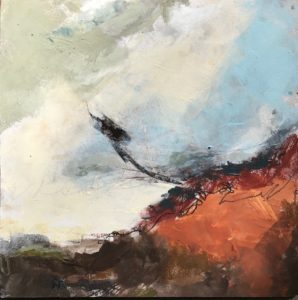
It was only after several hours of back and forth with the materials, rotations with the panels, that I realized I had near completed seven pieces. And then my head kind of exploded with the realization that these panels were a group of seven. I counted them: 1-2-3-4-5-6-7, yes it’s actually seven I’d been playing around with. Well, that was interesting, I thought to myself; I could reference the seven churches described in the beginning of Revelation with these, and maybe also incorporate the recently realized correspondence with the seven “mystery parables” that Jesus outlines in Matthew 13. The convergence between those two groups of seven is really fascinating. And here I had seven compositions of my own hand, which obliquely fit the main ideas in each of the two literary groupings. This, on panel, is my own surprising revelation. Showcased here is the 2nd of that series: “Smyrna and the Tares”. I haven’t yet titled the series.
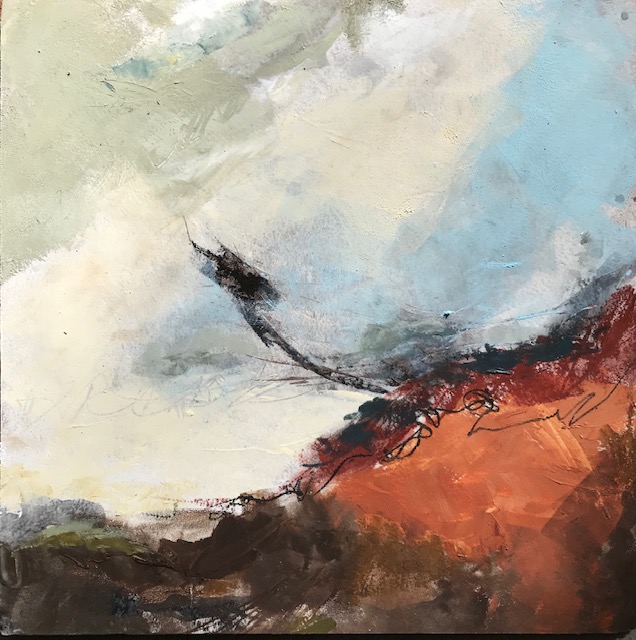
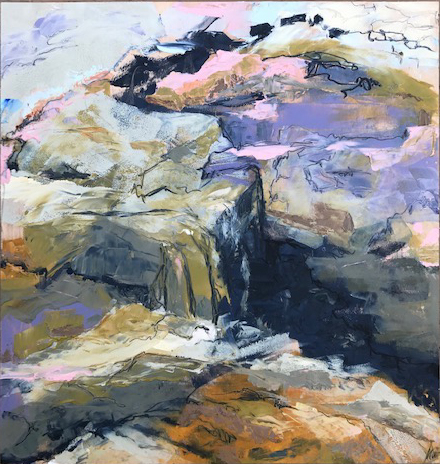
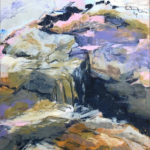
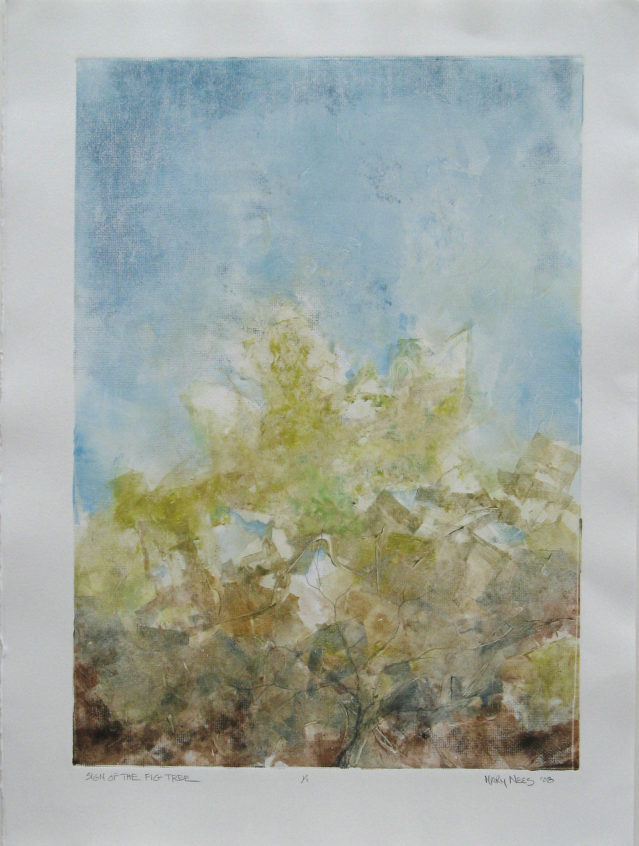

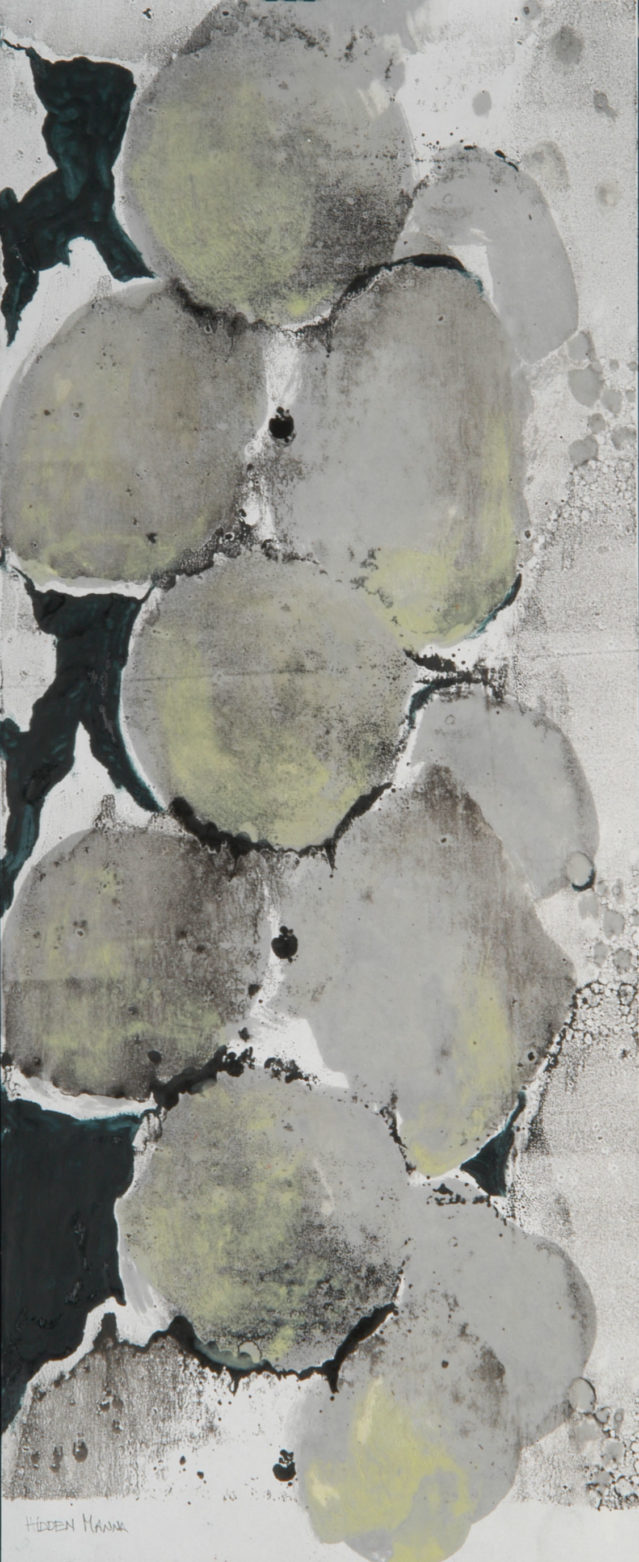


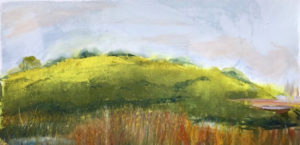
 I slammed my computer closed this morning. The click-bait headlines have me so wearied, sickened. You can point fingers, but we’re all in this thing together. So, I did the next thing in my little life. I went to the grocery store. I had to do this anyway today, but I got there early and started to relish the simple tasks of handling and selecting real live things that will make a difference in our well being this week. I got to choose. I chose to enjoy the steps, the colors, the kindness of the produce man. I don’t think I have ever enjoyed a grocery trip more! I came home with several bags of supplies, and arranged some on my counter like a Dutch still life. Art is not imitating life here. Real life was already happening. You could rather say Life is imitating art of a sort. This is some of the gleanings I’ll use up this week.
I slammed my computer closed this morning. The click-bait headlines have me so wearied, sickened. You can point fingers, but we’re all in this thing together. So, I did the next thing in my little life. I went to the grocery store. I had to do this anyway today, but I got there early and started to relish the simple tasks of handling and selecting real live things that will make a difference in our well being this week. I got to choose. I chose to enjoy the steps, the colors, the kindness of the produce man. I don’t think I have ever enjoyed a grocery trip more! I came home with several bags of supplies, and arranged some on my counter like a Dutch still life. Art is not imitating life here. Real life was already happening. You could rather say Life is imitating art of a sort. This is some of the gleanings I’ll use up this week. All this and more fascinates me for the Creation account in Genesis 2 has God Himself getting his hands into the dirt, in time, on the ground to make things. Then we are tasked, after His exampling, to make things. It’s in the making that seeing is enhanced. It’s in the time taken and slowed down where relationships are better understood. It’s work, but strangely hope-filled.
All this and more fascinates me for the Creation account in Genesis 2 has God Himself getting his hands into the dirt, in time, on the ground to make things. Then we are tasked, after His exampling, to make things. It’s in the making that seeing is enhanced. It’s in the time taken and slowed down where relationships are better understood. It’s work, but strangely hope-filled.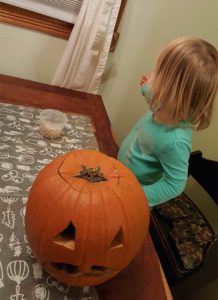 My granddaughter asked “what’s that?” as I was wiping up pumpkin mess. I looked up and saw her pointing to the wall and the round gray mimic cast by our big orange beauty. “That’s a shadow! Do you see how it moves as I slide this over? And if I turn the light off. . . it goes away! Isn’t that amazing? The light is what causes that shadow and the pumpkin is just blocking light on the wall. See, you can do the same thing with your hand: move your fingers and see how you can block the shine and change the shadow’s shape.” So, she got totally engaged with that exercise, and kept twinkling her fingers while I twinkled with thoughts.
My granddaughter asked “what’s that?” as I was wiping up pumpkin mess. I looked up and saw her pointing to the wall and the round gray mimic cast by our big orange beauty. “That’s a shadow! Do you see how it moves as I slide this over? And if I turn the light off. . . it goes away! Isn’t that amazing? The light is what causes that shadow and the pumpkin is just blocking light on the wall. See, you can do the same thing with your hand: move your fingers and see how you can block the shine and change the shadow’s shape.” So, she got totally engaged with that exercise, and kept twinkling her fingers while I twinkled with thoughts.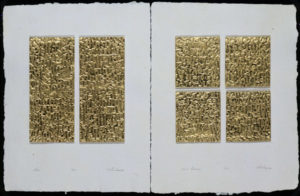
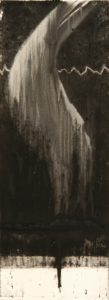 This is an older image, but a concept I’ve been revisiting in my head: the coming of whirlwind.
This is an older image, but a concept I’ve been revisiting in my head: the coming of whirlwind.